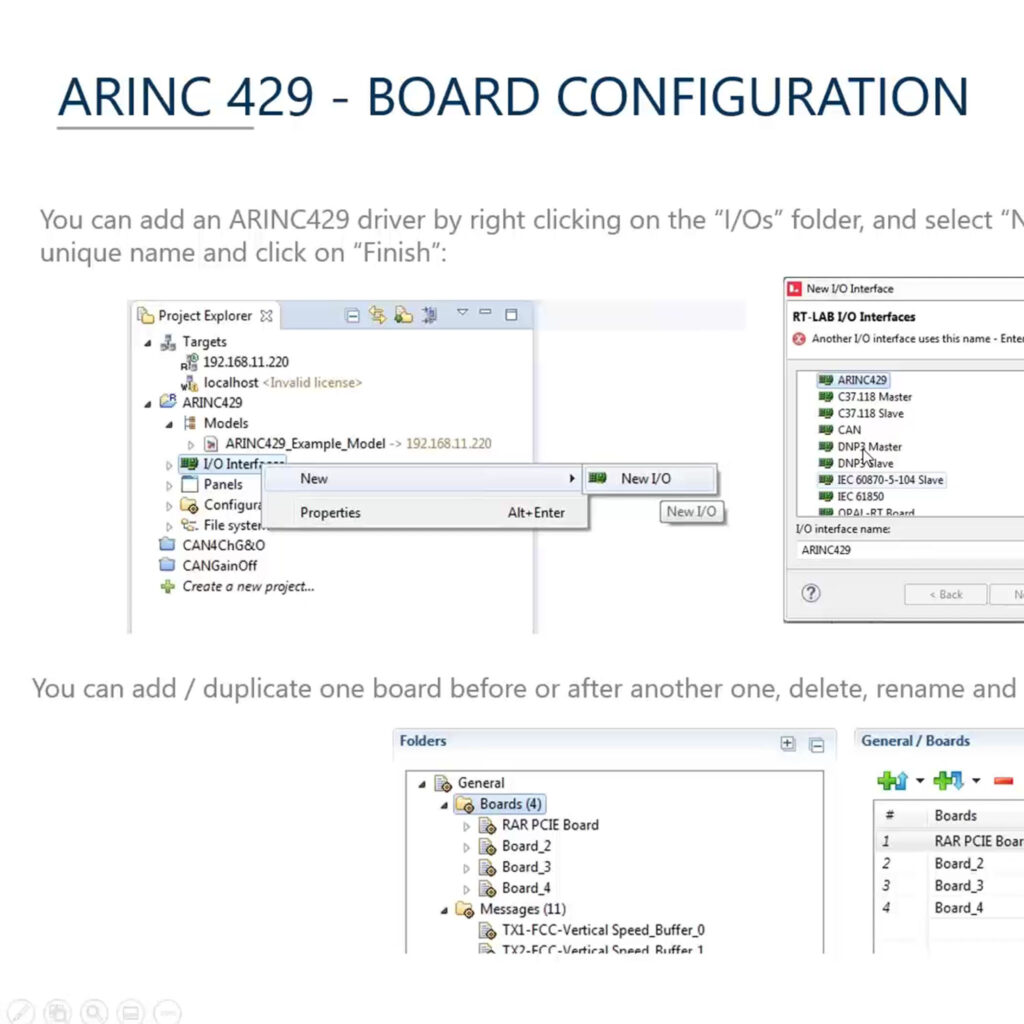AFDX/ARINC 664 P7
We provide an ARINC AFDX solution for Hardware-in-the-Loop (HIL) and rapid control prototyping (RCP) applications, including FADEC and aircraft systems component testing. Using a PCIe board, our solution connects OPAL-RT simulators to the ARINC AFDX avionics data bus, allowing configuration of independent transmission (TX) and reception (RX) channels with bit rates up to 1000 Mbit/s.
About AFDX/ARINC 664 P7
AFDX (Avionics Full Duplex Switched Ethernet) is a communication network defined by the ARINC-664, Part 7 standard for data exchange between avionics subsystems. Built on Ethernet technology and tailored for the avionics environment, AFDX connects avionics subsystems—such as flight control, GPS, and TPMS—through an AFDX end system that interfaces with a switched Ethernet network. Key features of this protocol include full duplex, redundancy, determinism, high-speed performance, and a switched, profiled network. The AFDX PCIe card functions as a switch between end devices, handling both data transmission and reception.
Platform compatibility
RESOURCES
Product guide
Explore our communication protocols, browse product lists, and access user documentation.

DEMO
See our technology in action
Explore our support for ARINC 429 and AFDX®. ARINC 429 is a self-clocking, self-synchronizing data bus protocol used in aircraft avionics. AFDX® offers deterministic timing and redundancy management, ensuring secure and reliable communication of both critical and non-critical data.
FAQ
Find the answers to your questions
What is AFDX/ARINC 664 P7 and how is it used in real-time simulation?
AFDX/ARINC 664 P7 is a deterministic Ethernet-based communication protocol defined for avionics systems. Our solution enables real-time simulation and testing of aircraft components by interfacing with the AFDX ARINC 664 data bus using a PCIe card.
How does the OPAL-RT system integrate with the ARINC AFDX data bus?
We connect to the ARINC AFDX data bus using a specialized PCIe board, which allows configuration of independent transmission (TX) and reception (RX) channels. This setup supports real-time communication for HIL and rapid control prototyping.
What are the key benefits of using OPAL-RT’s AFDX/ARINC 664 P7 solution for aerospace applications?
Our AFDX/ARINC 664 P7 solution provides high-speed, full-duplex data exchange, redundancy, and determinism—ideal for simulating aircraft subsystems such as FADEC and electronic control units (ECUs).
Is OPAL-RT’s AFDX ARINC 664 interface compatible with RT-LAB?
Yes, our AFDX ARINC 664 implementation is fully compatible with RT-LAB, enabling seamless integration with real-time simulation workflows for avionics testing.
Which aircraft systems can be tested using the ARINC AFDX-enabled HIL setup?
With the ARINC AFDX interface, users can test various aircraft systems, including flight control, GPS, and TPMS, ensuring reliable validation through real-time simulation and control prototyping.


